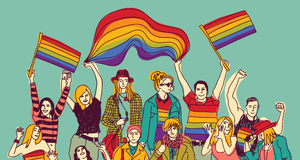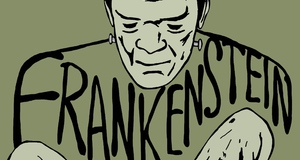Homonationalism and the Death of the Radical Queer
By
2015, Vol. 7 No. 03 | pg. 1/2 | » AbstractWhen one analyzes recent LGBTQ advocacy, with its rhetoric of liberal normativity and visibility, the gay rights movement has chosen inclusion over revolution. Through the intersectionality of dominant forms, namely whiteness, patriarchy, and affluent consumerism, these series of political moments constitute homonormativity. While such advocacy has legally decriminalized and validated homosexuality, it has also accentuated state regulation of sexuality. As the construction of homonormativity was in reaction to the terrorist body, sexual tolerance becomes an alibi for necropolitical violence and homonationalism becomes the justification for the United States’ neoliberal, militaristic hegemony. Same-sex marriage killed the radical queer. Although paradoxical, when one analyzes recent LGBTQ advocacy, with its rhetoric of liberal normativity and visibility, the gay rights movement has chosen inclusion over revolution. Through the intersectionality of dominant forms, namely whiteness, patriarchy, and affluent consumerism, these series of political moments constitute homonormativity. While such advocacy has legally decriminalized and validated homosexuality, it has also accentuated state regulation of sexuality.1 Inclusion inherently relies on the concept of exclusion, and this regulation of sexual morality has compartmentalized non-normative populations within a structuralist framework of necropower. Inclusion inherently relies on the concept of exclusion, and this regulation of sexual morality has compartmentalized non-normative populations within a structuralist framework of necropower. Within the context of 9/11 and the “war on terror,” homonormativity transcends into homonationalism, wherein the state utilizes the gay liberal subject as praxis of sexual othering vis-à-vis Islamophobia. Thus, 9/11 constructed the terrorist as queer. The normalized acceptance of the “homophobic Muslim” utilizes colonial discourses to conflate the racialized terrorist with sexual perversion. In turn, homonationalism reinforces America’s neoliberal militaristic hegemony, making sexual tolerance an alibi for necropolitical violence. No longer are gays traitors to the state and indicative of American moral decline, as the construction of homonormativity makes gays an exemplar of American expectionalism. Through queer Deleuzian assemblages, however, the reorientation of space and time can dismantle the liberal structures that reproduce exceptionalist militarism.The concept of American exceptionalism—that the United States is divinely sanctioned to bring civilization, liberty, and democracy to the rest of the world, with war if necessary—is not new. In 1630, Governor John Winthrop of the Massachusetts Bay Colony uttered the words Ronald Reagan would quote centuries later: For we must consider that we shall be as a city upon a hill. The eyes of all people are upon us. So that if we shall deal falsely with our God in this work we have undertaken, and so cause Him to withdraw His present help from us, we shall be made a story and a by-word through the world.2 Reagan embellished a little, calling it a “shining city on a hill,” in his farewell address, and in turn characterized America’s Manifest Destiny as a moral obligation to humanity.3 Nonetheless, the notion of expectionalism has been foundational to American nationalism and its justification for war. Scholars often ignore an essential concept to American exceptionalism: it relies on abject “other” to reproduce its stature. Whether it was Winthrop’s time when Puritans sought to civilize (or eliminate) the Aboriginal “savages,” or Reagan’s time when capitalism and democracy sought to end communism, American biopower manifests in war and violence against the period’s opposing force to American national identity. In other words, the construction of “America” is not based on what it is, but what it is not. Not until recently was the tolerance of homosexuality “American.” Since the Gilded Age, the public feared that homosexuals were symptomatic of a trend toward moral decline and thus challenging perceptions of exceptionalism. Whether the gays explained the supposed moral corruption of affluent, industrial, and urban males, were accused of being communist spies during the McCarthy era, or even scapegoated as the reasoning for the AIDS crisis; history often denotes homosexuality as the antithesis to American national identity. As Judith Butler writes, “the male homosexual is figured time and again as one whose desire is somehow structured by death, either as the desire to die, or as one whose desire is inherently punishable by death.”4 Up into the late 1990s, homosexuality was nonnormative and abject. Indeed, for queer theorists of the 1990s, it was almost as if the ontological revolution previously assigned to the working class was now attached to queer people. For Warner, “organizing a movement around queerness also allows it to draw on dissatisfaction with the regime of the normal in general. Following Hannah Arendt, we might even say that queer politics opposes society itself.”5 In the prime of the 1990s, with ACT UP and Queer Nation, for Warner and others, coming to queer self-understanding became a kind of revolutionary act and a refutation of the hegemonic structures that seek to repress non-normative forms of desire. This rejection of a liberal subjective formation of sexual identities is at the core of Butler’s theory in “Critically Queer.” In her foundational work, she distinguishes gender from sexuality through the materiality of sex. Butler maintains that the concept of “sex” is itself problematic. Sex is not a pregiven object, but rather it is an ideal performativity.6 Further, sex is a regulatory/cultural norm that then governs the materialization of bodies over time. Similar to Foucault, the regulatory power is thereby not an external imposition of power on a subject but is an operative constraint in subjective formation.7 It follows that performativity is not an act or “choice,” but rather a reiteration of norms. In the span of ten years, however, with such reiteration of norms, the sense of the radical queer inevitability disappeared with an emerging queer liberalism; by 2003, with the decriminalization of sodomy under the Supreme Court Ruling, Lawrence v. Texas, it was possible to imagine homosexuality integrated into normative social arrangements. Lisa Duggan identified a “new homonormativity” in gay politics “that does not challenge heterosexist institutions and values, but rather upholds, sustains, and seeks inclusion within them.”8Instead of working to dismantle the institutions that structure inequality—marriage, the military, the family, the workplace—the gay and lesbian political imaginary sought “a place at the table,” with mere formal equality and recognition. So the question is: what precipitated such a change from revolution to inclusion? Drawing from Jasbir Paur, it is evident that the formation of the terrorist other consolidated homosexuality within the intersections of dominant whiteness, masculinity, and nativism, which in turn created homonationalism. Quite arguably, the work of queer theorists in the late 1990s to distinguish gender from sexuality enabled homosexuality to intersect with gender normativities of masculinity and femininity, making the homonormative populace visually indistinguishable from the heteronormative majority. With the production of the terrorist other, patriotism converged with American nationalism. In other words, when an individual’s love for country is dependent upon their support for nationalistic actions against ‘others,’ dissent becomes intolerable and un-American. Within the context of homonormativity, American expectionalism discerns, others, and confines the racialized terrorist body within persons who appear Arab, Middle Eastern or Muslim. By advocating sexual modernity, the state subjects the queered terrorist body outside the norms of multiculturalism, making the “gay Arab” invisible to public discourse. In turn, the racialization and sexualization of Islam compels American military projects to bring a binary of “us versus them,” enforcing mandatory terms of patriotism.9 In a continual state of national paranoia, sexuality aids in policing appropriate forms of American citizenship and diaspora. This transcends into the necropolitical state and its monopoly of violence. By framing historical biopower within the colonial context, American military adventures uses rationalist assumptions of progressivism and sexual modernization to construct a “Muslim” form of sexuality that is inherently perverse, barbaric, and inhumane.10 Indeed the Orient, once conceived by Foucault as ars erotica of original release and unfettered sins, now symbolizes the space of repression and perversion, with American imaged as a place of freedom and opportunity. Such liberal face-value acceptance of the “homophobic Muslim,” is a scathing replay of what Foucault termed the “repressive hypothesis”: the notion that a lack of discussion or openness about sexuality reflects a sexual repression and a cultural-censorship apparatus of desire.11 Such Orientalist homonormativity reproduces American exceptionalism, legitimatizing the state’s monopoly of violence, defined according to Foucault by its exclusive right to kill.Continued on Next Page » Suggested Reading from Inquiries Journal
Inquiries Journal provides undergraduate and graduate students around the world a platform for the wide dissemination of academic work over a range of core disciplines. Representing the work of students from hundreds of institutions around the globe, Inquiries Journal's large database of academic articles is completely free. Learn more | Blog | Submit Latest in Sociology |
















